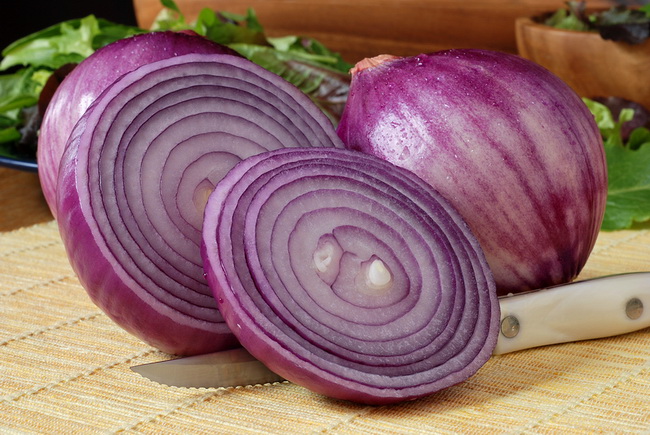- Make It Yourself Lavender Heart-Shaped Bath Bombs!
- 20 Things You Never Knew About “Down There”
- 12 Best Foods For Those Suffering From Arthritis Pain
- 12 Personal Hygiene Mistakes Almost Everyone Makes (Mom Never Told You About #4!)
- 15 Medicinal Plants And Herbs From The Cherokee People
- 12 Mind-Blowing Benefits Of Drinking Coconut Water During Pregnancy
- 12 Outstanding Winter Foods That Won’t Fatten You Up Like A Christmas Turkey
Want Super Health? Eat Plenty of These Two Common Veggies

Photo credit: bigstock.com
Red Onions
Red onions are slightly sweet, but they still have plenty of bite from all the sulfur groups. Sulfur groups produce a compound called cysteine in the body, which helps with detoxification. Some research shows that sulfur has strong antioxidant power that can stop blood cells from clumping together and forming clots.
Red onions are full of a particular flavonoid antioxidant called quercetin as well as the polyphenol antioxidant anthocyanin. Antioxidants like these can prevent the oxidation of cellular fatty acids and dietary fatty acids. These types of antioxidants are powerful killers of free radicals that rid our bodies of cancer cell overgrowth and reduce inflammation throughout the body.
When onions are cooked, such as in a soup or casserole, the heat will damage some of the anthocyanins but will leave the quercetin unharmed. In fact, if the onions are in any type of liquid, such as soup, the quercetin migrates into the liquid. The lower the heat, however, the more nutrients are reserved. Studies have shown that eating four to seven serving of red onions every week has been associated with a much lower risk of cancer. Four to seven servings would be about two or three onions, depending on the size.
SEE ALSO: Get In Your Daily Requirement of Veggies Without Living on Salads
Studies show that eating large amounts of onions can greatly lower the risk of prostate and gastric cancers. Onions contain certain substances that protect the body called organosulfur compounds, which are released when the vegetables are crushed, chewed, or chopped up. Organosulfur compounds stop cancer from developing by detoxifying carcinogens, stopping the growth of cancer cells, and stop tumors from getting their own blood supply. One study found a protective role of onions on the endometrial cancer risk.
Onions also have something called flavonoids, which are a type of antioxidants that include anthocyanins, flavonols, isoflavones, and catechins. All flavonoids have strong health promoting compounds. Red onions contain at least 25 different types of anthocyanins. Anthocyanins have powerful anti-inflammatory effects. Find out here what’s new and beneficial about onions.
Sources:

































Lygeia
Mar 7, 2015 at 6:41 pm
A mushroom is neither a fruit nor a vegetable, it is a fungus.
soulo1
Mar 27, 2015 at 2:55 am
and it’s delicious 🙂